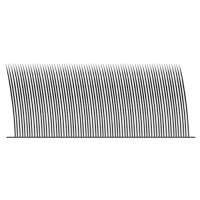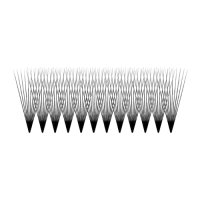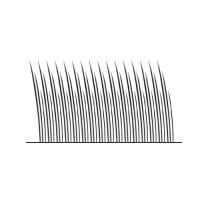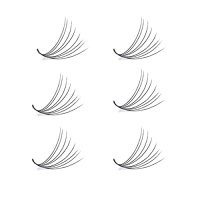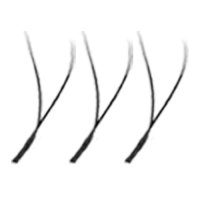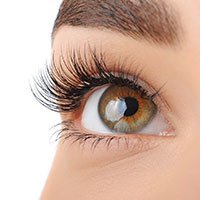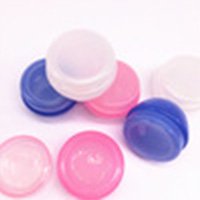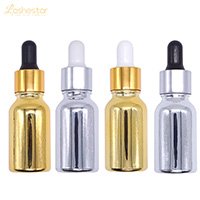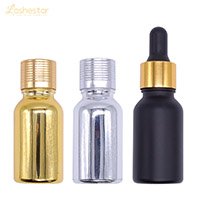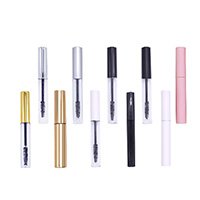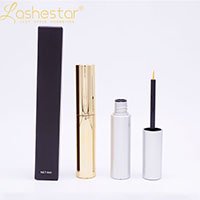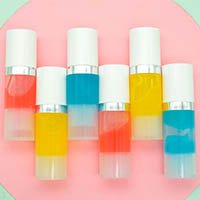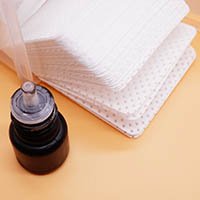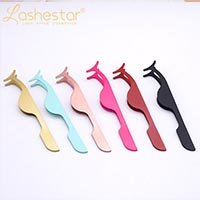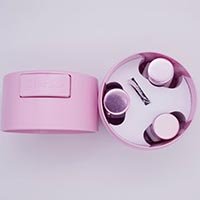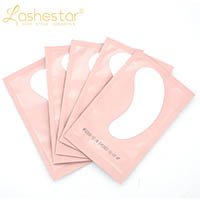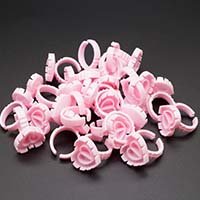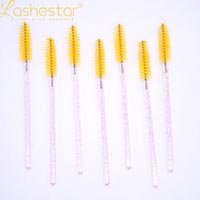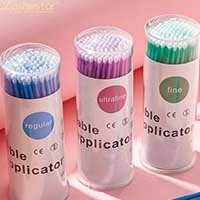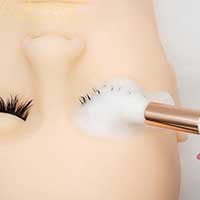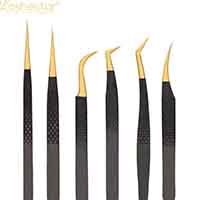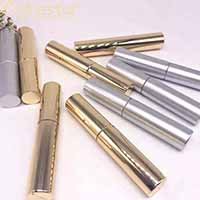Eyelash extensions have transformed beauty regimens across the globe, yet to some they can be an uncomfortable and even life-threatening experience after becoming allergic. For both technicians and clients, it is important to be aware of these reactions so safety can be maintained and the client continues to enjoy their lash applications. This complete guide will help you understand all there is to know about allergic reactions to lash extensions.
Understanding Lash Extension Allergies
What is an Allergic Reaction?
An allergic response to lash extensions happens when our body’s immune system senses the ingredients in the adhesive as a foreign invader. This provokes an immune response, which results in inflammation and a variety of unpleasant symptoms in the sensitive eye region.
Common Allergens in Lash Products:
Cyanoacrylate: The main ingredient in the majority of lash glues
Carbon black: Substance used as a pigment for formulating an adhesive to black color.
Formaldehyde: Naturally Occurring,.1 PPM found in a few adhesive blends
Latex: Sometimes found in certain adhesive formulas
Benzoic acid: Preservative used in certain products
Symptoms of Lash Extension Allergies
Immediate Symptoms (Within 24-48 hours):
Severe itching: Constant need to rub the eyes
Redness: Bloodshot appearance of the whites of eyes
Edema: Raised areas in the eyelids or around it
Watery eyes: Copious tearing without irritation
Burning: A burning or stinging sensation
Late Onset Symptoms (2-7 days post application):
Eyelid eczema: Dry, flaky skin on the eyelids
Skin rash: Redness beyond lash line
Eczema-like patches: Red, dry, and itchy skin around eyes
Sensitivity to light: Discomfort in bright conditions
Blurred vision: Changes in your sight due to swelling.
Severe Symptoms (Need medical attention right away):
Trouble breathing: Tightness in chest or throat
Extreme swelling: Eyes swollen shut
Hives: Raised welts anywhere on body or face
Dizziness: Lightheadedness or faintness
Differentiating Allergy from Irritation
Key Differences:
Time of onset: Allergies develop 24-72 hours after application; irritation occurs immediately
Duration of symptoms: Allergies last for days; irritations only linger briefly
Pattern of signs: Generalized in allergies and localized in irritation.
Treatment: Allergies need treatment, irritation resolves once the irritant is removed.
Visual Indicators:
Allergy: Both eyes swelling symmetrically, extending redness
Itching: Unequal response, localized in application site only
Risk Factors for Developing Allergies
Individual Factors:
Past allergies: History of skin or chemical sensitivity
Sensitized skin: Tendency to dermatological reactions
Atopic dermatitis: A pre-existing eczema or skin condition
Asthma: Respiratory allergies often accompany skin allergies
Age: Younger people may have more "reactive" immune systems
Environmental Factors:
High relative humidity: Increased release of adhesive fumes
Poor ventilation: Concentrates chemical exposure
Recent illnesses: Immune system weakness after illness
Immediate Treatment Protocols
First 24 Hours:
Take off extensions: High-speed removal is critical
Cold compresses: Apply for 15 minutes every two hours
Antihistamines: Oral antihistamines (cetirizine or loratadine)
Don’t rub: Avoid aggravating the irritation
Medical Advice:
Seek professional help from a doctor immediately.
Medical Treatments:
Topical steroids: Hydrocortisone cream for mild reactions (by prescription)
Oral steroids: Prednisone for more serious reactions (requires a prescription)
Antihistamine eye drops: For ocular symptoms
Epinephrine: In case of anaphylactic reactions (rare)
Home Care Measures:
Saline rinses: Clean the eyes with a gentle sterile saline solution.
Hypoallergenic products: Only use products approved for use around the eyes.
Cool surroundings: To alleviate inflammation, provide a cool environment.
Elevated sleep: Sleep with head resting at an incline to decrease swelling
Professional Management for Lash Artists
Client Assessment:
Before Service - Questionnaire: Ask about history of allergies or sensitivities.
Patch testing: Offer adhesive test behind the ear 24 hours prior to service.
Product disclosure: Offer ingredient lists for client review.
Service Adjustments:
Other adhesives: Have hypo-allergenic choices handy
Less fume techniques: Low-fume adhesives and good ventilation
Barrier methods: Use barriers for the eyes
Less procedure duration: Minimize application time to reduce exposure
Prevention Strategies
Client Education:
Pre-appointment notes: Avoid caffeine and alcohol before lash appointments
After-care instructions: Proper cleaning and maintenance tips
Red flags: Teach clients to recognize early signs of allergy
Emergency Contact: Provide emergency contact details in case of adverse reactions.
Product Selection:
Hypoallergenic adhesives: Opt for formaldehyde and latex-free options
Quality materials: Use medical-grade products from reputable suppliers
New products: Always ensure adhesives are within their expiration date
Several Alternatives: Keep a variety of adhesives on hand for different sensitivities
Alternative Options for Sensitive Clients
Adhesive Alternatives:
Medical grade adhesive material: Formulated for sensitive eyes
Transparent adhesives: Avoid carbon black for pigmentation allergies
Latex-free formulas: Eliminate latex proteins
Low-fume options: Reduce chemical exposure during application
Application Techniques:
Isolating techniques: Avoid adhesive on the skin
Curing methods: Employ expedited curing to minimize contact
Volume Density: Use fewer lashes to reduce adhesive usage
Positioning: Avoid direct contact with skin for extended periods
Long-Term Management
For Clients with Known Allergies:
Full eradication of services: Cease lash extension services
Lash lift substitutes: Chemical-free alternatives for lush lashes
Traditional mascara: Use high-quality hypoallergenic mascara products
Natural lash care: Use lash serums to boost lash growth
Desensitization Considerations:
Medical consultation: Allergy specialist assessment
Low-dose challenge: Not recommended due to potential severity of reaction
Alternative methods of treatment: Focus on lash health rather than extensions
Industry Best Practices
Professional Standards:
Continued education: Keep up-to-date on skin care and allergy treatments
Client records: Maintain comprehensive allergy histories
Product knowledge: Understand potential allergens in lash products
CPR & immediate first aid: Be prepared for severe allergic reactions
Clinic Preparation:
Emergency kit: Stock allergy response kits
Ventilation systems: Ensure proper air exchange in the salon
Client Waivers: Provide allergen disclosure and consent forms
Insurance: Carry liability insurance to cover allergy reactions
When to Seek Medical Attention
Urgent Care Indicators:
Swelling that impairs vision
Difficulty breathing or swallowing
Rash beyond the face
Fever accompanying eye symptoms
No improvement after 24 hours of treatment
Emergency Symptoms:
Tightness in chest or throat
Swollen tongue or lips
Wheezing or shortness of breath
Dizziness or loss of consciousness
Rapid heart rate
Recovery Timeline and Expectations
Typical Recovery:
24-48 hours: Peak symptoms followed by slow resolution
3-5 days: Use of ice gel pack to reduce swelling and redness
1-2 weeks: Total resolution of skin symptoms
4-6 weeks: Eyelid skin fully returns to normal
Permanent Considerations:
Development of sensitivity: Permanent sensitivity after an allergic reaction
Cross-sensitivity: Potential to react to related chemicals
Professional applications: Clients may need to refrain from certain beauty treatments
Legal and Ethical Considerations
Professional Responsibility:
Informed consent: Full disclosure of risk before services
Documentation: Keep accurate records of products and client reactions
Follow-up procedures: Check in with clients after service for safety
Product liability: Understand the manufacturer’s responsibilities
Client Rights:
Full disclosure: Clients have the right to know what’s in the products
Emergencies: Ensuring emergency protocols are followed
Return Policy: Provide clear refund policies for unsatisfactory services
Privacy: Maintain confidentiality in medical records
Future Innovations and Research
Emerging Solutions:
Bio-based adhesives: Natural ingredient formulations
Patch testing kits: At-home testing options before application
Sensitivity testing: Genomic test for chemical sensitivities
**Better ventilation
**: Professional salon-grade air purifiers
Industry Trends:
Increased regulation: More ingredient disclosure demanded
Education focus: Greater emphasis on allergy management
Client advocacy: Focus on client safety and comfort
Technology: Use of technology for health monitoring during services
Conclusion: Balancing Beauty and Safety
Lash extensions have numerous beauty benefits, but knowing how to deal with allergic reactions is crucial for both clients and artists. With proper education, careful product selection, and thorough client management, most reactions are preventable or manageable.

